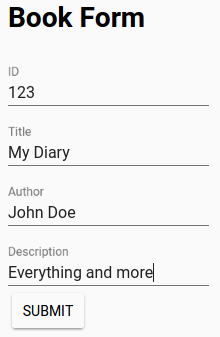In the previous article we finished one Polymer Web Component. It contained a form that could be used to add, update and remove books by sending HTTP requests to the back-end server. We also explored few different ways to interact with the component from outside by calling its functions.
In this article we’ll create the second component that will be used to list all the books and send custom events to open an existing or a new book. Those events will not be sent directly to the component we built earlier but to the document the component will reside on. We’ll get to that part in time…
